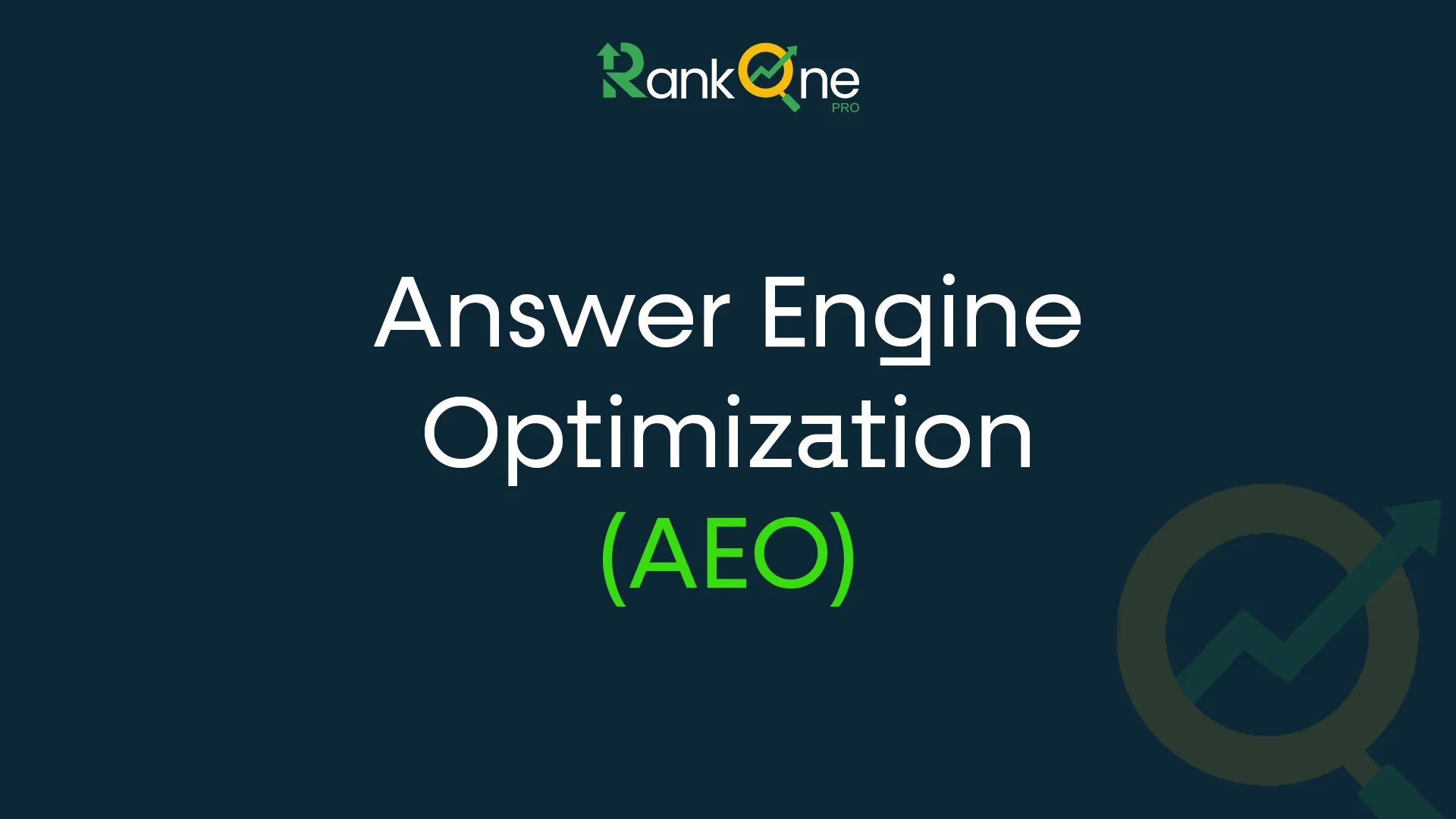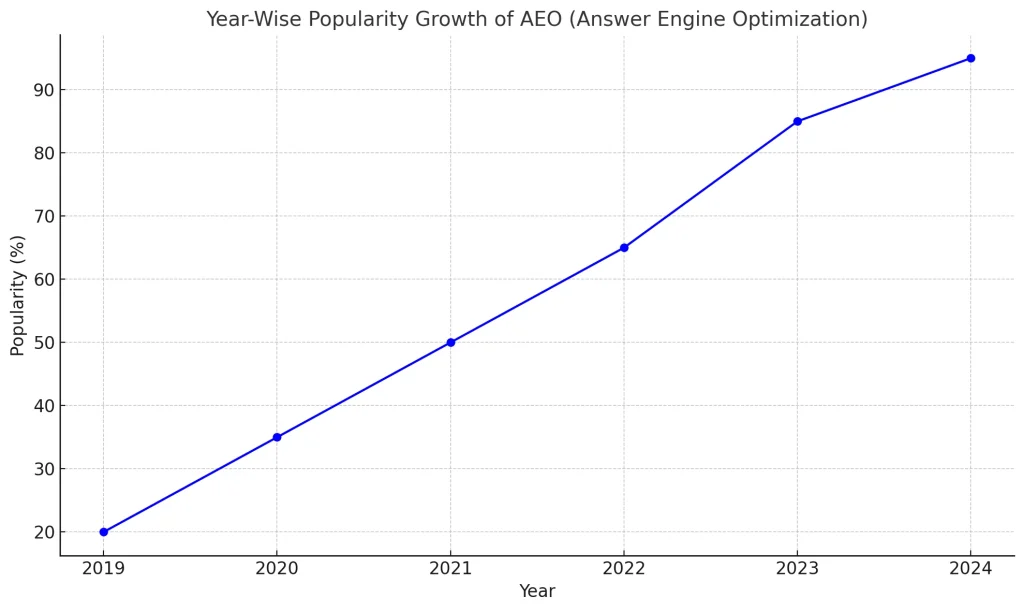
Google Business Profile Updates Not Showing: What You Need to Know
As of April 23rd, 2025, updates to Google Business Profiles (GBP) such as published posts,
Top SEO Services Company | Digital Marketing, Web Design, & PPC Experts – Rank1Pro

Is editor at rank1pro.com, has a decade of writing experience. With a strong background in Digital Marketing and PR Agencies.


Always write content for Answer Engine Optimization (AEO) to directly answer a specific query. Use clear headings, concise language, and organized information, like lists, tables, and bullet points, so that the search engines can easily find and display your answers in rich results or featured snippets.
The digital space is very different for search engines, as the old dynamics of people searching are being rapidly altered. Today, “users expect more answers and fewer links.” This is fundamentally different with AEO, which aims at structuring content to deliver direct answers to user queries through rich results such as featured snippets, knowledge panels, and voice search responses.
AEO is the cornerstone of efforts by businesses to remain competitive in a world where zero-click searches are the focus of the SERPs. By 2024, nearly 57% of all searches have no clicks.
In this blog post, we dive into everything you need to know about AEO: what it is, how it works, and why it matters for improving user experience alongside search engine visibility.
AEO is one of the SEO types which supports the structuring of web content by providing the most direct answer to the user’s questions. Unlike traditional searches, where users click through to a website, AEO ensures that related information is displayed directly in the form of featured snippets, knowledge graphs, voice search answers, and other query-related content in SERPs.
While traditional SEO aims to rank websites higher in search results to bring traffic, AEO focuses on structuring content so search engines like Google can easily extract and present direct answers. This shift is driven by the rise of zero-click searches, where users find what they need without necessarily visiting a website.
AEO depends heavily on the use of voice assistants like Siri, Google Assistant, and Alexa, which pull succinct answers from structured data. Businesses that adopt AEO strategies are more likely to stay relevant in search rankings and meet user expectations for quick, accurate answers.
The fundamental basis of AEO revolves around the proper use of structured data and semantic SEO. Structured data (schema markup) helps search engines better understand the content on your site. For instance, implementing structured data can make your content eligible for rich results such as FAQ boxes or how-to snippets.
Semantic SEO focuses on understanding the intent behind user searches and delivering content that satisfies that intent. It’s not just about targeting keywords but also ensuring that your content is relevant to a broad range of related queries, which helps establish authority in your niche.
Using structured data allows you to inform search engines exactly what your content is about. For example, adding FAQ schema or recipe markup increases the chances of your content being displayed in a featured snippet or rich result.
Below, you will find the growing popularity of Answer Engine Optimization (AEO) over the years, reflecting its growing importance in SEO strategies:

There has been a significant increase in AEO adoption from 2020 to 2024, largely driven by the growth of voice search and the rise of zero-click searches. By 2024, AEO has become a crucial part of SEO strategies as search engines prioritize fast, relevant answers for users.
| Feature | AEO | Traditional SEO |
|---|---|---|
| Focus | Direct answers in SERPs | Ranking higher on SERPs |
| Targeted by | Voice search, mobile search | Organic traffic |
| Main Strategy | Structured data, concise content | Keyword optimization, backlinks |
| Search Result Type | Featured snippets, zero-click | Standard organic links |
| User Interaction | No click required | User clicks through to website |
| Optimization Tools | Schema markup, structured data | Keywords, meta tags, backlinks |
Implement structured data such as FAQ schema, recipe schema, or product schema to increase the likelihood of your content appearing in rich results.
Create content that answers common voice search queries. Use conversational language that mimics how users speak when using voice assistants.
Ensure your content directly answers questions and fulfills user intent. Make your answers concise and easy to understand.
Incorporate FAQs on your website related to your products or services. This helps your site appear in FAQ-rich results on SERPs.
| Articles | Descriptions |
|---|---|
| Top 10 B2B Digital Marketing Firms in USA | Boost your business growth with advanced B2B digital marketing solutions. |
| Boost Local Voice Search Rankings for Brick-and-Mortar Shops | Make your business the top answer for voice searches in your neighborhood |
| Search Generative Experience | Revolutionizing search with AI-driven, real-time answers that transform user engagement and SEO strategies |
| Why Content Authority Is Replacing Backlinks | Learn why Content Authority is becoming more critical than backlinks for SEO |
| The Rise of Zero-Click Searches | Discover how Zero-Click Searches are reshaping SEO strategies |
AEO focuses on optimizing content for direct answers, while traditional SEO is centered on ranking websites for queries. AEO targets voice search, featured snippets, and rich results.
AEO delivers quick answers without requiring users to click through to a website, making it ideal for mobile and voice search users.
Yes, structured data such as schema markup is essential for AEO. It helps search engines understand your content and feature it in rich results or featured snippets.
While AEO improves your visibility in SERPs, it might not increase website traffic directly because users find their answers without visiting your site. However, it builds brand authority and trust.
As search engines evolve, Answer Engine Optimization (AEO) is transforming how businesses connect with users. By focusing on direct answers, structured data, and semantic SEO, brands can improve their visibility in rich results, featured snippets, and voice searches. The future of search is all about user experience, and businesses that adopt AEO will lead by providing fast, relevant answers to their audience.

As of April 23rd, 2025, updates to Google Business Profiles (GBP) such as published posts,

In a business scenario today, understanding performance metrics is the key to success, most of

It is a fact that, in the dynamic world of digital advertising, it becomes really
615 West Johnson Ave, 202-s, Cheshire, CT 06410
1-888-927-9258
info@rank1pro.com